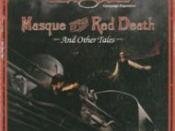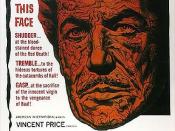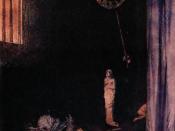Most notably recognized for their strange and bizarre stories, both Edgar Allen Poe and William Faulkner wrote several disturbing narratives. As such, it is not surprising to find that Poe's story, "The Masque of the Red Death," and Faulkner's tale, "A Rose for Emily," have much in common. Among their numerous similarities, the most apparent comparison is the theme of death in both plots.
Foremost, in "the Masque of the Red Death," the country had been exposed to the bubonic plague. Victims of the plague died an untimely death. Prince Prospero, in an attempt to defend himself from the epidemic, locked the gates so no one could leave or enter his premises. At the night of the masquerade, the guests of the prince found themselves in a hall of seven linked room, each devoted to a single solid color. Once the guests made their way through the blue, purple, green, orange, white, and violet rooms, they came to an eerie black room with blood-red windows.
The seven chambers in castle represented one's journey through life; moving from east to west, just as the sun rises in the east and sets in the west, so did the guests metaphorically travel from birth to death. Coincidentally enough, the last and black room, symbolizing death, was also the room the guests feared the most, in the same sense the guests also feared death.
Meanwhile, Faulkner had described the Grierson house with such dull and gloomy details that resulted in a dreary and colorless image of the residence. Not to mention, in "A Rose for Emily," there were several direct references to death. For example, the funeral setting, the death of Emily's father, the purchase of arsenic, and the murder of Homer. Miss Emily was the eldest and...


